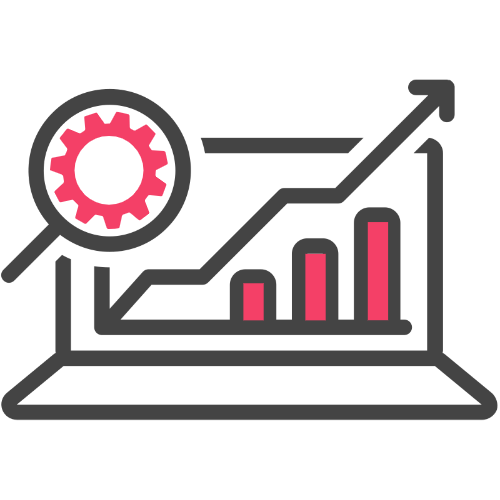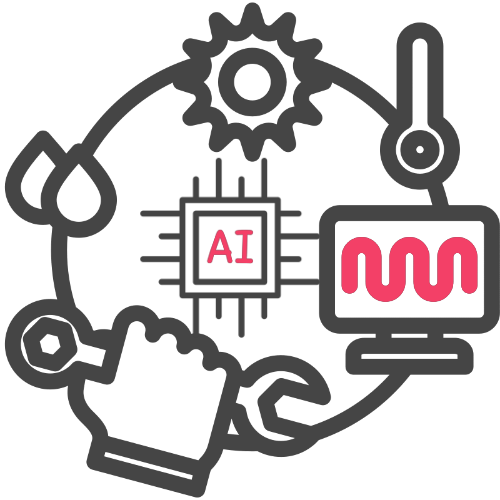In an era focused on sustainable development and environmental responsibility, energy efficiency has become a crucial factor for commercial buildings. Governments and regulatory bodies worldwide have implemented stringent energy efficiency regulations to curb energy consumption and reduce carbon emissions.
Adhering to these regulations not only benefits the environment but also helps businesses minimize operational costs. In this blog, we’ll explore various energy efficiency regulations & initiatives in India and how IoT-powered automation solutions can assist commercial buildings in adhering to these regulations effortlessly.
Table of Contents
ToggleUnderstanding Energy Efficiency Regulations & Initiatives in India
Energy efficiency regulations & initiatives encompass a range of guidelines and requirements that aim to limit energy consumption and promote sustainable practices in commercial buildings. These regulations often focus on areas such as lighting, heating, ventilation, air conditioning (HVAC) systems, insulation, and overall building management.
Compliance with the regulations is essential not only to meet legal requirements but also to enhance the overall efficiency and sustainability of commercial buildings.
The Government of India has implemented various policies, regulatory tools, and initiatives to promote energy conservation and energy efficiency in commercial buildings. Recognizing the significant energy consumption and potential for savings in this sector, specific initiatives have been introduced to drive sustainable practices and reduce the environmental impact of commercial buildings.
Through a combination of mandatory regulations, voluntary programs, and incentives, the government aims to foster a culture of energy efficiency in commercial buildings, leading to reduced energy consumption, lower operating costs, and a more sustainable built environment.
Let’s briefly discuss some of these policies & programs:
1. Energy Conservation Building Code (ECBC)
The Energy Conservation Building Code (ECBC) was created to improve the energy efficiency in the new commercial buildings. ECBC was launched by the Ministry of Power (MoP), Government of India, in May 2007, as the first step towards promoting energy efficiency in the commercial building sector.
The Energy Conservation Building Code (ECBC) sets minimum energy standards for new commercial buildings having a connected load of 100 kW or contract demand of 120 kVA or more. The effective implementation of code provides comfort to occupants by adopting passive design strategies & day light Integration. It is technologically neutral, promotes renewable energy and also emphasizes on the life cycle cost of building. The updated code was launched in 2017, which had additional priorities of renewable energy integration, ease of compliance, inclusion of passive building design strategies and flexibility for the designers.
Source: Bureau of Energy Efficiency
2. Shunya Labeling for NZEBs and NPEBs
Introducing a groundbreaking expansion to the Building Labelling Programme centered on Energy Consumption, the Bureau of Energy Efficiency (BEE) introduced the “Shunya” Labeling Programme.
This innovative initiative extends the scope of the program to encompass Net Zero Energy Buildings (NZEB) and Net Positive Energy Buildings (NPEB). Embodying the essence of its Hindi translation, “Shunya” which means Zero (0), this label aptly identifies and distinguishes NZEB and NPEB structures, signifying their remarkable energy efficiency achievements.
Source: Bureau of Energy Efficiency
3. Star Rating of Commercial Buildings
Launched by the Ministry of Power in India in 2009 the programme is based on the energy usage in the building over its area expressed in kWh/sqm/year. In this program, buildings are rated on a 1-5 scale, with 5-star labeled buildings being the most efficient.
Presently, four typologies of the buildings are covered in the scope viz. Office buildings, BPO, Hospitals, and shopping malls. The buildings having connected loads 100kW and above are considered for the BEE star rating scheme. Recently, BEE has revised the EPI band for Star Rating for Office Buildings and BPOs.
Source: Bureau of Energy Efficiency
4. TERI’s Green Rating for Integrated Habitat Assessment (GRIHA)
TERI, drawing from more than twenty years of expertise in green and energy-efficient constructions, has created GRIHA (Green Rating for Integrated Habitat Assessment). This rating system was officially embraced by the Indian government in 2007 and is now the nation’s preferred standard for evaluating green buildings.
Source: GRIHA India
5. National Mission for Enhanced Energy Efficiency (NMEEE)
- Perform, Achieve, Trade (PAT)
- Energy Efficiency Financing Platform
- Market Transformation for Energy Efficiency (MTEE)
- Framework For Energy Efficiency Economic Development
Source: Bureau of Energy Efficiency
6. National Building Code of India 2016 (NBC 2016)
The National Building Code of India (NBC), a comprehensive building Code, is a national instrument providing guidelines for regulating the building construction activities across the country. It serves as a Model Code for adoption by all agencies involved in building construction works be they Public Works Departments, other government construction departments, local bodies, or private construction agencies.
The Code mainly contains administrative regulations, development control rules and general building requirements; fire safety requirements; stipulations regarding materials, structural design, and construction (including safety); building and plumbing services; approach to sustainability; and asset and facility management.
Source: Bureau of Indian Standards
These policies and regulatory tools collectively aim to enhance energy efficiency, reduce environmental impact, and promote sustainable practices in commercial buildings throughout India.
IoT-powered building automation plays a significant role in helping commercial buildings comply with energy efficiency regulations and policies in India. By integrating IoT technologies, commercial buildings can actively monitor and manage energy consumption, making it easier to comply with energy efficiency regulations, meet building code requirements, and achieve sustainability goals.
Introducing ZenConnect
ZenConnect is an enterprise-grade IoT-first solution. It is a full-stack hardware light, software heavy, retrofit-ready, and cost-effective solution.
ZenConnect provides a centralized hub for monitoring and controlling key aspects of the built infrastructure i.e., building assets and their energy consumption, thus enabling commercial buildings to achieve energy efficiency compliances effortlessly.
Key Features and Benefits of ZenConnect:
1. Real-time Energy Monitoring & Control for Efficient Energy Usage

ZenConnect offers real-time energy monitoring capabilities, allowing building managers to gain a comprehensive understanding of their energy consumption patterns. By collecting data from various sources such as lighting, HVAC systems, and occupancy sensors, ZenConnect provides valuable insights into energy usage trends, peak demand periods, and potential areas for improvement. Armed with this information, building managers can make data-driven decisions to optimize energy consumption and identify energy-saving opportunities.
Moreover, ZenConnect’s intelligent automation features empower commercial buildings to optimize energy usage automatically. Through smart algorithms and machine learning, the platform continuously analyzes data and adjusts settings in real-time.
For instance, it can adjust temperature and lighting levels based on occupancy patterns or external weather conditions. By automating energy optimization, ZenConnect minimizes waste, ensures optimal comfort levels, and maximizes energy efficiency compliance effortlessly.
2. Predictive Maintenance for Asset Energy Efficiency

Detecting and addressing equipment malfunctions or inefficiencies promptly is crucial for maintaining energy efficiency compliance. ZenConnect employs advanced fault detection and diagnostics capabilities, continuously monitoring various building systems and devices for anomalies.
By identifying issues such as HVAC system faults or malfunctioning sensors, ZenConnect enables proactive maintenance and swift rectification, minimizing energy wastage and preventing compliance violations.
Such a proactive maintenance approach ensures that building systems are always running at peak efficiency, enabling energy savings.
3. Smart Energy Management for Electrical Safety Compliances

As part of the IoT-powered building automation solution, ZenConnect’s one of the most crucial components is the implementation of smart energy meters. These meters are designed to monitor and analyze various electrical safety parameters, such as voltage, current balance, and other relevant metrics. By doing so, they can detect potential safety hazards and provide valuable insights for building management.
4. Integration and Scalability

ZenConnect seamlessly integrates with existing building management systems, including existing assets, equipment, devices, sensors, and energy meters. This integration ensures compatibility and interoperability, enabling a holistic approach to energy management.
Furthermore, ZenConnect is scalable, making it suitable for buildings of varying sizes and complexities. Whether it’s a single office space or a large commercial complex, ZenConnect can adapt and accommodate the specific needs and requirements of the building.
Energy efficiency compliance is no longer an optional consideration for commercial buildings; it has become a necessity for sustainable and cost-effective operations. ZenConnect, with its advanced capabilities in real-time monitoring, automated optimization, fault detection, and analytics, plays a vital role in helping commercial buildings meet energy efficiency regulations effortlessly.
By leveraging this innovative building management solution, businesses can enhance their environmental stewardship, reduce operational costs, and build a more sustainable future.
Embracing ZenConnect is a transformative step towards achieving energy efficiency compliance and unlocking the benefits of sustainable building management.
Get in touch with our IoT specialists to learn more about ZenConnect.
